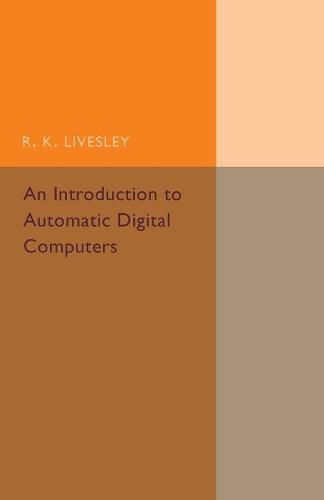Readings Newsletter
Become a Readings Member to make your shopping experience even easier.
Sign in or sign up for free!
You’re not far away from qualifying for FREE standard shipping within Australia
You’ve qualified for FREE standard shipping within Australia
The cart is loading…






Originally published in 1960, as the second edition of a 1957 original, this textbook is aimed at those without advanced mathematical training and provides a comprehensive introductory account of digital computers, what they are capable of doing and how they are made to do it. It begins with a discussion of programming - the preparation of instructions for the computer. This leads on to a consideration of systems of number storage, from the simple decimal system of desk calculating machines to the varieties of binary storage systems used in modern high-speed computers. The final chapter considers points, which arise in applying computers to engineering calculations, and gives details of some of the problems already solved in this way. Throughout the book the emphasis is on the applications of computers to routine work rather than to advanced research. This book will be of value to students of the history of computer science.
$9.00 standard shipping within Australia
FREE standard shipping within Australia for orders over $100.00
Express & International shipping calculated at checkout
Originally published in 1960, as the second edition of a 1957 original, this textbook is aimed at those without advanced mathematical training and provides a comprehensive introductory account of digital computers, what they are capable of doing and how they are made to do it. It begins with a discussion of programming - the preparation of instructions for the computer. This leads on to a consideration of systems of number storage, from the simple decimal system of desk calculating machines to the varieties of binary storage systems used in modern high-speed computers. The final chapter considers points, which arise in applying computers to engineering calculations, and gives details of some of the problems already solved in this way. Throughout the book the emphasis is on the applications of computers to routine work rather than to advanced research. This book will be of value to students of the history of computer science.